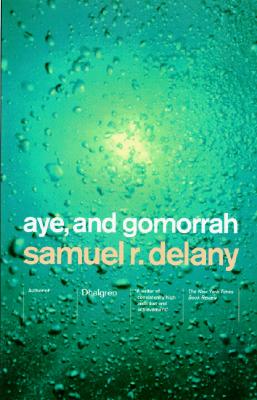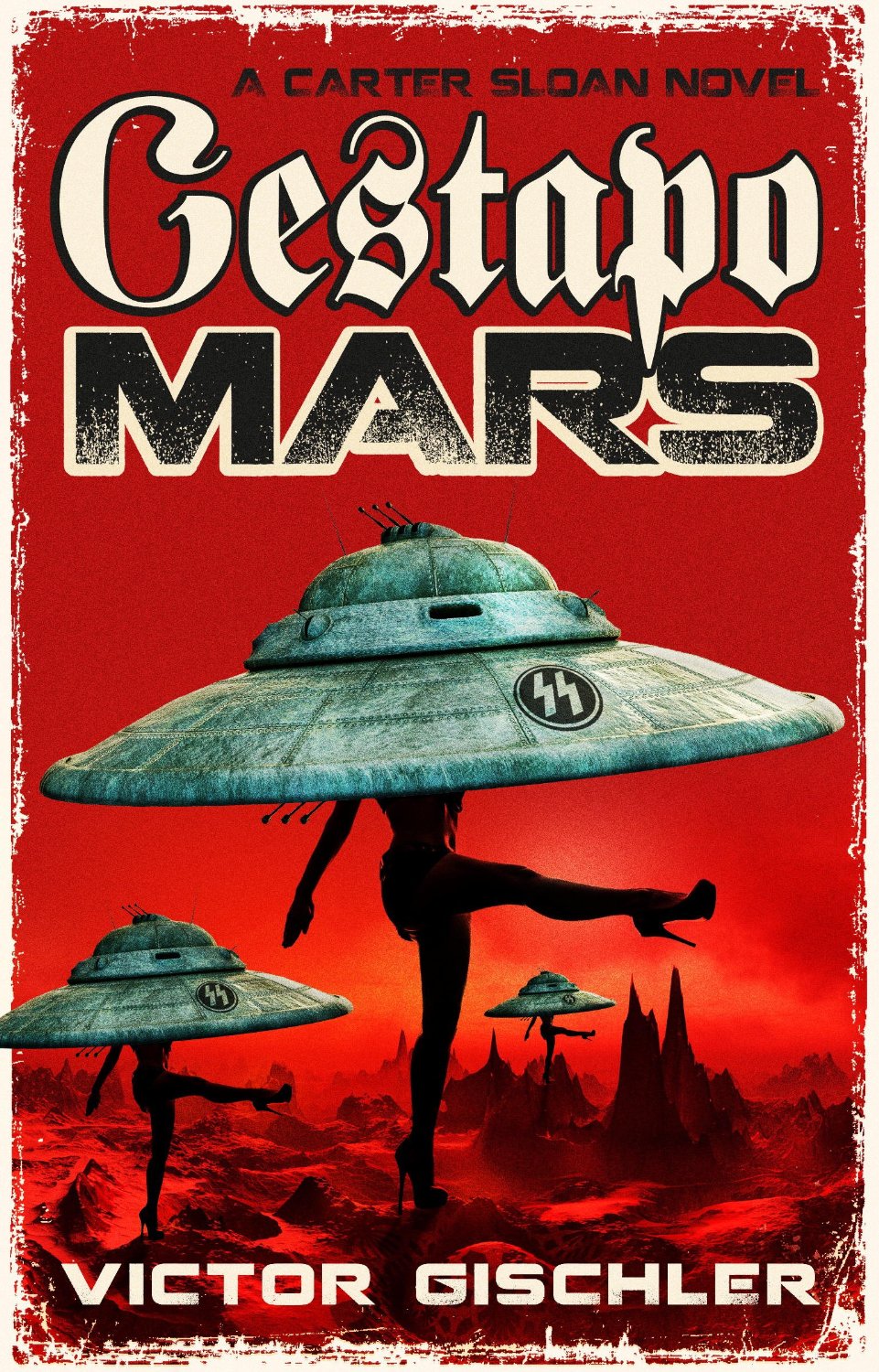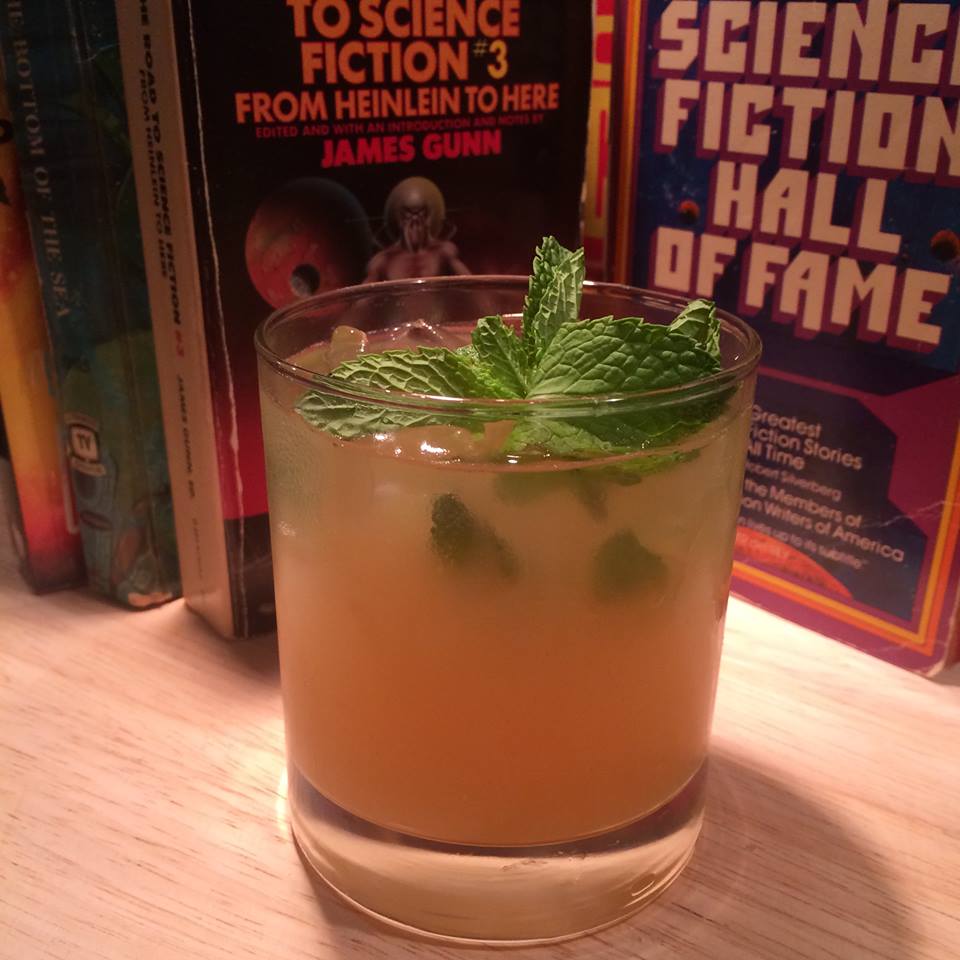
You may not be spacewalking any time soon, but NASA has opened a free database to let you explore from Earth.
If you’re looking to add more authenticity to your science fiction writing, check this out: NASA has set up a website to make its publicly funded research available for free. The archive features a decent search engine and gives full access to peer-reviewed papers.
Working on a story on a space plague and wonder how microbes adapt to microgravity? Check it out. Want to know the latest developments in artificial gravity research? Yep, they’ve got that too.
Some of my fishing expeditions in the NASA database led me to articles light years above my scientific comprehension. But others, such as this piece on arctic climate trends as observed from space, were completely comprehensible to a neophyte such as myself.
Thanks go to sf writer Chris McKitterick for bringing this one to my attention.
Happy exploring.
Speculative San Antonio: Sanford Allen on the Public Axis Podcast
Shortly before the holidays, I participated in San Antonio comedy troupe Comedia A Go-Go’s Public Axis Podcast and the results are now live.
The discussion with my side-splitting hosts covered wrestling, writing, rock-n-roll, dueling holidays horror movies, superheroes, siblings and a whole slew of other topics. Be warned: it’s a loud, surreal and frequently funny ramble. Thanks to Regan Arevalos, Larry Garza and Jess Castro for a great time, some strange questions and many much-needed laughs.
Forgotten Book: Gestapo Mars by Victor Gischler (2015)
By Scott A. Cupp
This is the 165th in my series of Forgotten Books.
I hope you all had a wonderful Halloween with lots of costumes and candy and fun. We had rain in San Antonio, first early in the day and then again just as the sun went down. Kind of dampened a few spirits and ghouls too.
This week I need to talk about one of my favorite living writers, Victor Gischler. It was Bill Crider who I blame for pointing me in Gischler’s direction. VG was looking for “Gischler virgins” (people who had never read his work) to try a test on. I responded that I was a virgin and he sent me a copy of Shotgun Opera. The only requirement was that I read the book and post a review. If I liked it, great. If not, tell people what I thought and pass the book on.
I posted my review on Amazon and it went along the lines of “What if Quentin Tarrant no had directed the Marx Brothers in Kill Bill and they had done it in drag?” That really didn’t describe the plot of the book, but it certainly captured the flavor. Gischler is not going to be your mother’s thriller writer. Conventional is not a word to enter into these discussions.
I’ve read many of his books, but not all. A couple are waiting for me to get to them. I just cannot binge on this stuff. But I love what I read. When I was Toastmaster at ArmadilloCon a few years back, the committee asked if there was anyone they could invite that I wanted to come. I told them Gischler’s name and he came in from Baton Rouge. He seems like a nice normal person, and I think he had a good time. I know I enjoyed seeing him there.
So this week we are looking at his new science fiction thriller which is not likely to be in a lot of places because … well, it’s not very PC. Gestapo Mars is a title unlikely to send Barnes & Noble ordering 150 copies per store. It’s much more likely to be in the one-or-fewer copy range. Much like Norman Spinrad’s The Iron Dream, this attempts to make a Nazi sympathetic hero work for the reader.
Carter Sloan is a programmed and highly trained assassin and spy for the Third Reich, which is still in existence several centuries from now. He has been in cryostorage for 258 years, awaiting a mission. When he is awaked, he is told that he will be invading a resistance group looking for the Daughter of the Brass Dragon. Almost immediately, the people reviving him are attacked by the Nazis, who also want him to get to the Daughter of the Brass Dragon. His instructions are a little vague. He will have to improvise and move along. When he finds the Daughter he is to capture her. Or maybe kill her. No, it’s capture. Then it’s kill. Things get a little weird.
He is sent to the moon in a disguise and is accepted by the resistance and the lovely Meredith Capulet, who agrees to smuggle him out. But nothing goes as planned, and her little flyer is attacked by the aliens of the Coriandon race, gelatinous beings from somewhere not near here.
To save himself, he must reveal his Nazi connections and call for help. This obviously does not set well with Meredith, but he wants to live and love again. Bad things happen to the Nazis, and Carter and Meredith are on a slow ship back to the Nazi stronghold on Mars.
But, wait, things have changed. The resistance has moved against the Nazis, and no one is safe. His mission changes until he no longer cares and just wants to survive. Enter the exploding dog with new missions.
The action is fast, furious and irreverent. Sloan has to question all sides and make love to all available women. It’s kind of like Raiders of the Lost Reich, as situations change every few pages. The Nazis and resistance need to unite, because the gooey aliens are coming and they have big guns.
It’s a fun and fast read full of in jokes and odd stuff. When someone sings “Hey, hey we’re the Nazis. The people say we Nazi around,” you know sanity has left the building.
As usual, your mileage may vary, but if Ernie Kovacs and Monty Python are your type of humor, along with a tiny sprinkle of Benny Hill, you can find a home on Gestapo Mars. And the cover is fun, too.
Series organizer Patti Abbott hosts more Friday Forgotten Book reviews at her own blog, and posts a complete list of participating blogs.
Moment of Wonder: Apollo Animation
Last week, the Interwebs were abuzz with news on the bursting-fat Flickr archive of images from NASA’s 11 Apollo missions. Turns out an independent group called the Project Apollo Archive, rather than the feds, spent the past 15 years prepping the photos for public consumption.
The sheer volume of images in the archive requires time and deep digging to fully enjoy. Lucky for us, filmmakers have already started doing that hard work. They’re using the pics as raw material for stop-motion animations, such as this one from Vimeo user harrisonicus, which really bring the wonder to life. Enjoy:
Apollo Missions from harrisonicus on Vimeo.
Cocktail Hour: The Spacer (Inspired by Samuel Delaney’s “Aye, and Gomorrah…”)
When I first read Samuel Delaney’s “Aye, and Gomorrah…” as a teenager, I had no idea what to make of it.
Most of the sf I’d read up to that point was about big ideas, big action and big conflict. People saving or destroying planets, besting alien adversaries and exploring new dimensions. And here was a short story deemed important enough to win the 1967 Nebula award that was simply about a woman propositioning the protagonist for sex — or something like sex.
What was I missing? Turned out, a lot.
In Delaney’s story, interstellar travelers — dubbed “Spacers” — are neutered before puberty to null the effects of the radiation they encounter during their travels. They grow into sterile, androgynous adults whose original sex is the subject of guessing games. Enter the “frelks,” a group of fetishists aroused by the Spacers, primarily it’s suggested, because the sexless space travelers are unattainable.
 The story begins with a group of Spacers on a Kerouac-esque road trip that whisks them from France to Mexico to Texas to Turkey, drawing gawks from the populace along the way. We learn the Spacers are hustling for frelks, seeking compensation for their desirable androgyny and sterility. We also get the sense that while they’re superficially respected by Earth people, they’re still lonely outsiders.
The story begins with a group of Spacers on a Kerouac-esque road trip that whisks them from France to Mexico to Texas to Turkey, drawing gawks from the populace along the way. We learn the Spacers are hustling for frelks, seeking compensation for their desirable androgyny and sterility. We also get the sense that while they’re superficially respected by Earth people, they’re still lonely outsiders.
About midway through the story, the unnamed Spacer protagonist ends up making eye contact with a pretty Turkish student, who invites him to her apartment. The rest of the story plays out largely in dialogue as they spar over the Turkish woman’s interest in Spacers and she tries to convince her pickup to stay, even though she can’t come up with any lire to make it worthwhile.
Delaney, who is gay, points out the story was “written three years before Stonewall and half a dozen years before anyone was aware there might even be a disease like AIDS.” It’s clearly a commentary on what it means to be a sexual other, and it makes the powerful argument that sexuality is not a choice — an idea not widely accepted 50 years ago.
‘“You don’t choose your perversions,”‘ the Turkish student tells the Spacer. ‘”You have no perversions at all. You’refree of the whole business. I love you for that, Spacer. My love starts with the fear of love. Isn’t that beautiful? A pervert substitutes something unattainable for ‘normal’ love: the homosexual, a mirror, the fetishist, a shoe or a watch or a girdle.”’
The story works in part on the strength of the prose, which whips along with a playful rhythm. Delaney doesn’t beat us over the head with long-winded explanations about who the Spacers or frelks are and how this future society works. We pick up those details gradually, through dialogue and action, as the story unfolds.
Even though its powerful message about sexuality not being a choice may not be as revelatory today (for many of us, anyway), “Aye, and Gomorrah…” has additional resonance because it recognizes that human sexuality evolves with technological change. Who’d have thunk back in 1966, for example, that people would be so willing to commit mutual masturbation in front of computer screens halfway around the globe? And consider the number of fetishes — from latex clothing to extreme body modifications — that are the outgrowth of technological advances.
I don’t know about you, but all that analysis has left me with a powerful thirst. May I present this week’s cocktail, the Spacer?
The Spacer riffs on the fetishized outsiders of “Aye, and Gomorrah” by giving exotic flavors a boozy boost. The ingredients also give a nod to the story’s Turkish, Mexican and Texan settings. The tequila and tamarindo are a perfect border combination, sweetened by the pineapple juice, and the mint spins us halfway around the world to Istanbul’s Flower Passage.
THE SPACER
2 oz. reposado tequila
2 oz. fresh pineapple juice
2 oz. or more of chilled tamarindo (tamarind soda available at most Latin American markets)
Fresh mint leaves
1/2 tsp sugar
Muddle six to eight mint leaves with the sugar in the bottom of a cocktail glass. Fill the glass with ice and pour in the tequila and pineapple juice. Still until condensation appears on the outside of the glass and top with the tamarindo. Garnish with another sprig of fresh mint.
Cocktail hour: Spring Boulevardier
The less you know about the recent film Spring before watching it, the better.
The 2015 low-budget thriller presents us with dark and appealing story mashup — part love story, part horror, part science fiction – about the ultimate unattainable woman. It starts out as a well-crafted romance between a traveling American and the mysterious Italian beauty he encounters on the Adriatic. Soon after, it whisks us into alleys of mystery as old and foreboding as those in the medieval town where the pair meet.
The American, Evan (Lou Taylor Pucci), heads to Italy after problems mount at home and quickly finds himself smitten by Louise (Nadia Hilker), whose charms aren’t just physical. She’s brilliant and worldly — and has a habit of disappearing on him, which only adds to her allure. Louise also places a lot of odd rules on their relationship. The crisply written, often funny, dialogue keeps us interested, even if romance isn’t the reason we’re watching. It makes the relationship seem real and resonant.
Co-directors Justin Benson and Aaron Moorhead (whose only other film was the super low-budget horror tale Resolution) help build the suspense with stretches of eerie silence and beautifully framed shots of predatory insects and decay in the ancient seaside town. The effect is dreamlike, and it makes us increasingly certain Evan’s dream of romance will end up a nightmare.
In other words, see it with a date.
And while you’re watching, why not sip on the cocktail it inspired, the Spring Boulevardier? The Boulevardier is a classic cocktail that serves up a perfect romance between distinctly American and distinctly Italian ingredients. It fuses the bold complexity of bourbon with the enigmatic bitterness of Campari.
In this version, I add a couple dashes of orange bitters to help the orange flavor really pop, as it’s a nice foil to the Campari’s bitterness.
SPRING BOULEVARDIER
Cocktail Hour: The Chatsubo Quencher
 William Gibson’s cyberpunk masterpiece Neuromancer has one of the best opening lines, not only in sf but in literature: “The sky above the port was the color of television, tuned to a dead channel.”
William Gibson’s cyberpunk masterpiece Neuromancer has one of the best opening lines, not only in sf but in literature: “The sky above the port was the color of television, tuned to a dead channel.”
The book’s first few pages, set in an expat bar in near-future Japan called the Chatsubo, are a textbook example of how to yank your reader into an imagined world without boring them with a bunch of leaden exposition. Gibson helps us immediately understand his world — its casual drug use, its cybernetically enhanced populace and street-level con games — not through narrative intrusion but via dialogue, description and action served up in crisp, street-savvy prose.
Check it out: “The bartender’s smile widened. His ugliness was the stuff of legend. In an age of affordable beauty, there was something heraldic about his lack of it. The antique arm whined as he reached for another mug. It was a Russian military prosthesis, a seven-function force-feedback manipulator, cased in grubby pink plastic.”
In one descriptive, action-filled paragraph, Gibson lets us know people in his imagined future can be sculpted into any beautiful shape they want and that advanced cybernetic gear isn’t just commonplace but old enough to be antique. All without slowing us down for a yawn-inducing infodump. That’s a master at work.
It’s writing worth tipping a drink to.
While the only drink I remember being described in the opening chapter of Neuromancer is draft Kirin beer, this week’s cocktail seems like the kind of sophisticated urban refreshment that would be popular in the Chatsubo.
THE CHATSUBO QUENCHER
Shake the liquid ingredients over ice in a shaker and pour into a chilled martini or cocktail glass. Garnish with a long, thin strip of lemon peel.




